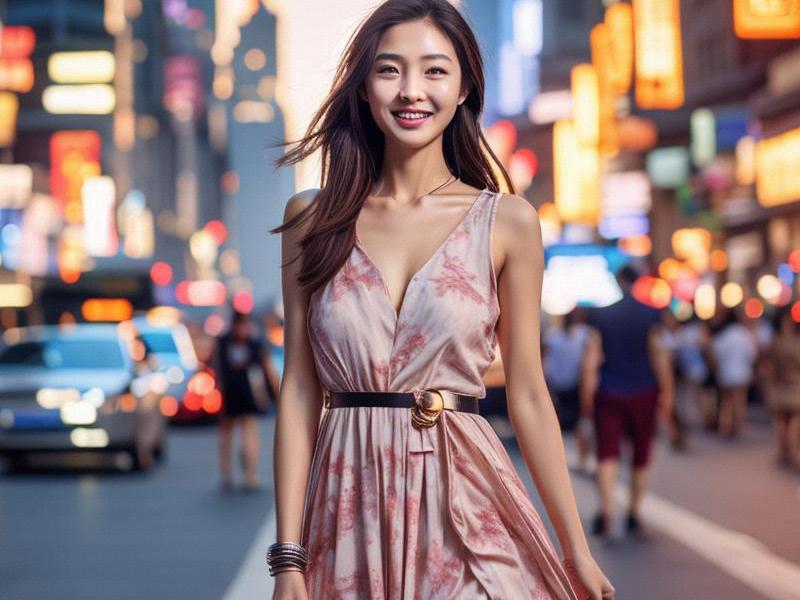
Shanghai, a city that has long been synonymous with elegance and sophistication, is a place where beauty is not just a superficial attribute but a profound reflection of its rich cultural heritage. The term "Shanghai Beauties" encapsulates the essence of this city's historical and cultural journey, highlighting the women who have graced its stages and shaped its identity.
The concept of "Shanghai Beauties" is deeply rooted in the city's history, particularly during the early 20th century when Shanghai was known as the "Paris of the East." This era, often referred to as the "Golden Age" of Shanghai, was marked by a unique blend of Eastern and Western cultures, which significantly influenced the city's fashion, art, and social norms. It was during this time that the image of the "Shanghai Beauty" emerged, characterized by a perfect blend of traditional Chinese elegance and Western sophistication.
The legendary courtesans of old Shanghai were among the first to embody this ideal. These women, often referred to as "flower girls," were not just objects of beauty but also cultural icons who played a significant role in the city's social and cultural life. They were known for their grace, intelligence, and artistic talents, which set them apart from their counterparts in other parts of China. The courtesans of Shanghai were patrons of the arts, supporting musicians, painters, and writers, and their patronage helped foster a vibrant cultural scene in the city.
爱上海论坛 One of the most famous courtesans of this era was Sai Jinhua, a woman whose life story has been immortalized in literature and film. Sai Jinhua was not just a beauty but also a symbol of resistance against foreign aggression. Her tragic love story and her subsequent marriage to a German diplomat, which she later regretted, made her a controversial figure. Despite the controversies, Sai Jinhua's legacy endures as a testament to the strength and resilience of the "Shanghai Beauties."
The influence of Western culture on Shanghai's beauty standards became even more pronounced during the colonial period when the city was divided into concessions controlled by various foreign powers. This period saw the emergence of a new class of women known as "Shanghai Girls," who were educated and exposed to Western ideas. These women were known for their modern lifestyles, fashion sense, and independent spirits, which were a stark contrast to the traditional Chinese women of the time.
The "Shanghai Girl" became a symbol of modernity and progress, embodying the spirit of the city's rapid transformation.她们时尚感 (their sense of fashion) (their sense of fashion) was legendary, with她们穿着 (they wearing) (they wore) the latest European designs, often tailored to fit their petite figures. Their hairstyles, makeup, and accessories were copied by women all over China, making them trendsetters of their time.
爱上海同城对对碰交友论坛 The architectural landscape of Shanghai also played a significant role in shaping the image of the "Shanghai Beauty." The city's iconic Bund, with its rows of historic buildings, and the French Concession, with its charming cobblestone streets and European-style villas, provided the perfect backdorpfor the city's elegant women. These settings became the stages where the "Shanghai Beauties" showcased their beauty and sophistication, attracting the attention of artists, writers, and photographers.
The influence of the "Shanghai Beauties" extended beyond the realm of fashion and beauty. They were also active in the city's political and social movements, advocating for women's rights and education. Figures like Soong Ching-ling, a prominent political figure and the widow of Dr. Sun Yat-sen, were instrumental in shaping the city's progressive image. Soong Ching-ling's dedication to social causes and her role in the Chinese revolution made her a symbol of strength and resilience, embodying the spirit of the "Shanghai Beauties" in a new era.
上海龙凤419社区 In contemporary Shanghai, the legacy of the "Shanghai Beauties" continues to thrive. The city has become a global fashion capital, attracting designers, models, and fashion enthusiasts from around the world. The modern-day "Shanghai Beauties" are not just symbols of physical beauty but also representatives of the city's dynamic culture and innovative spirit. They are fashion icons, business leaders, artists, and social activists, embodying the diverse and inclusive nature of modern Shanghai.
The fashion scene in Shanghai is a testament to the city's enduring influence on global trends. The city hosts numerous fashion weeks and exhibitions, showcasing the latest designs from both domestic and international designers. The streets of Shanghai are a fashion runway, with young women and men sporting the latest styles, blending traditional Chinese elements with modern Western aesthetics. This fusion of cultures is a reflection of the city's history and its ability to adapt and evolve in a rapidly changing world.
The art scene in Shanghai is equally vibrant, with galleries, museums, and cultural institutions showcasing the works of both local and international artists. The city's art scene is a melting pot of traditional Chinese art forms and contemporary Western art, reflecting the city's unique cultural identity. The "Shanghai Beauties" of today are not just consumers of art but also creators and patrons, supporting the city's artistic community and contributing to its cultural richness.
In conclusion, the concept of "Shanghai Beauties" is a testament to the city's rich history and cultural heritage. From the legendary courtesans of old Shanghai to the modern-day fashion icons, these women have played a significant role in shaping the city's identity and influencing its cultural landscape. The enduring legacy of the "Shanghai Beauties" is a reminder of the city's ability to blend tradition with modernity, creating a unique and vibrant culture that continues to captivate the world.
